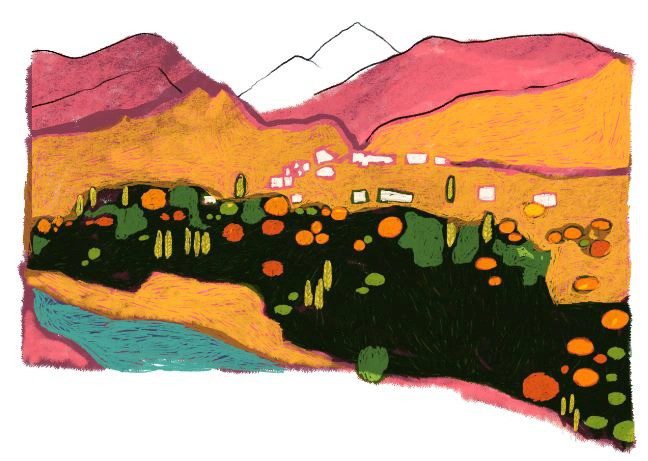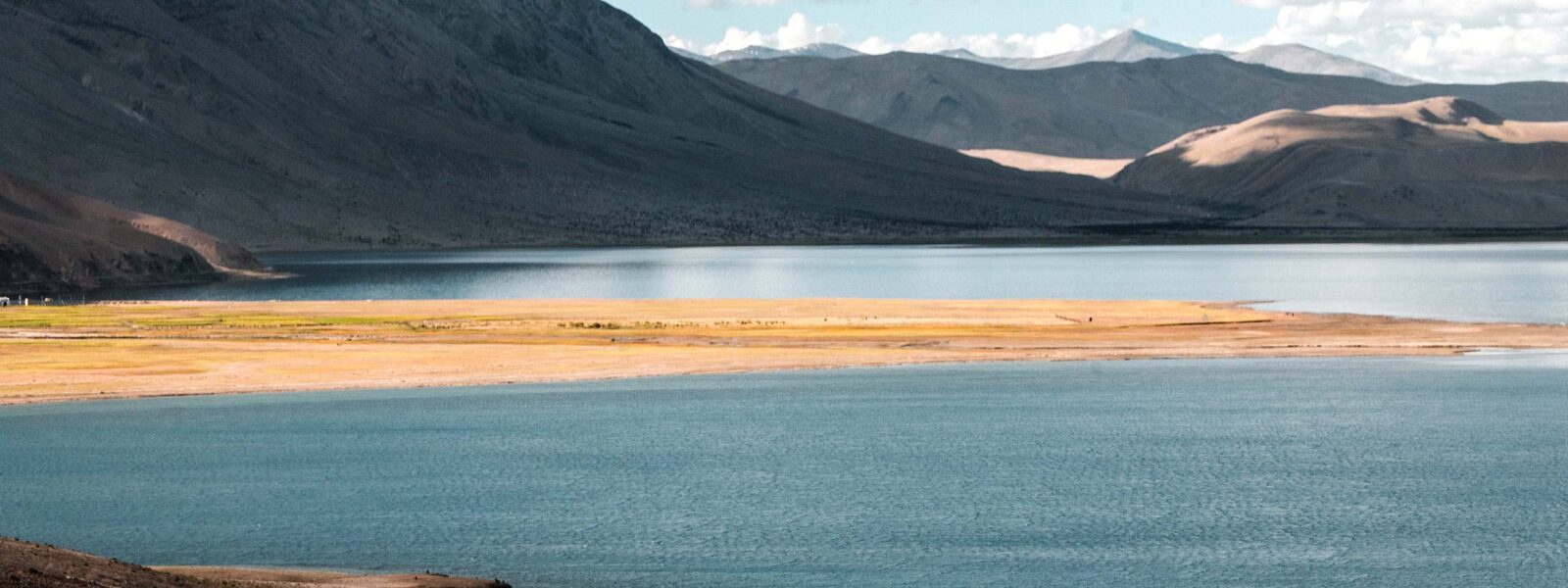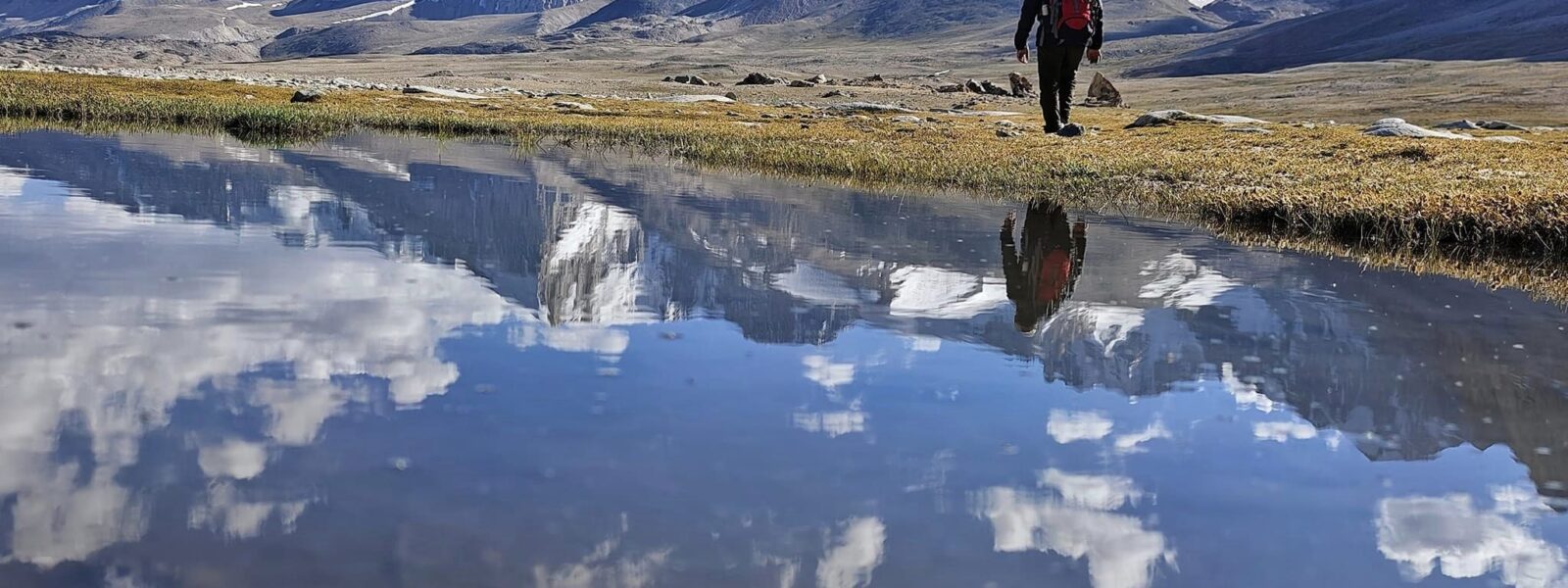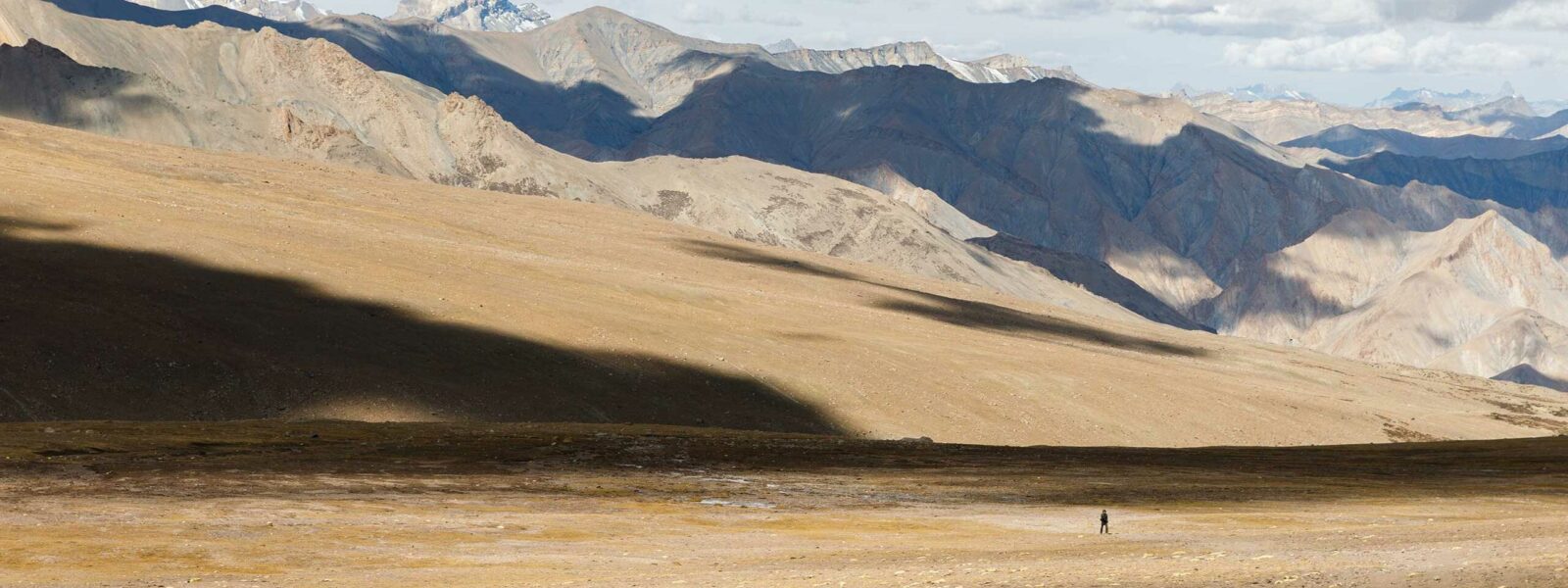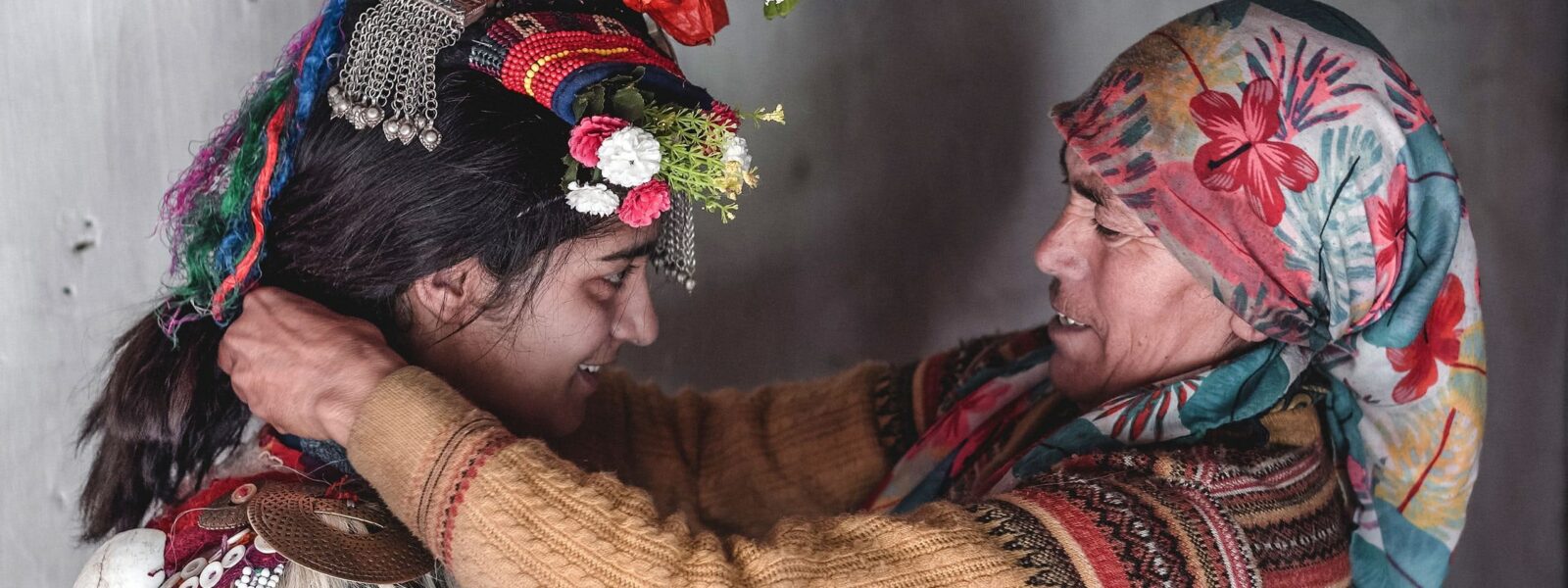Ladakhi Tea and Tales: Unveiling the Enigmatic Stories of the High Peaks
“Tell me, mémé lé, about the tale of the wolf,” I implore the elderly man beside me, nestled in the warmth of the Ladakhi rebo—a traditional yak hair tent. My fingers cradle the comforting mug of butter tea, its rich flavor soothing the growl of my hungry stomach.
He begins, “Ah, I recall a tale of a wolf and three goats. The first goat encounters the wolf, who inquires, ‘What adorns your head?’ ‘Horns,’ the goat replies. The wolf asks, ‘What cloaks your body?’ ‘Wool,’ she answers. And, ‘What covers your feet?’ ‘Hooves,’ comes the reply. Unconvinced, the wolf devours the first goat and moves on to the second, who provides the same answers and meets the same fate.
When the wolf confronts the youngest and most cunning goat, he asks, ‘What is on your head?’ The youngest goat boldly retorts, ‘A knife to slay you.’ ‘What shields your body?’ ‘A rope to bind you.’ ‘And what protects your feet?’ ‘Hooves to kick you.’ With fierce resolve, the young goat thrusts her horns into the wolf, binds him with her wool, and kicks him mercilessly until he perishes,” the old man concludes, his voice tinged with the weight of ancient wisdom.

I sit in silence, my response swallowed by the laughter that fills the tent. My anthropologist’s curiosity wrestles with my conservationist’s instincts. I am here to capture the folklore of these mountains for my doctoral research. Some scholars suggest that folklore helps people interpret their world by attributing moral qualities to animals, or the ‘more-than-human’ realm. By anthropomorphizing—imparting human traits to animals—stories serve as a mirror reflecting societal norms and behaviors.
The tale of the wolf intrigues me. It reveals the Ladakhi view of the predator, perhaps as a metaphor for how power is perceived and challenged by the underdogs. Could this be a reflection on the fine line between justice and vengeance?
My first encounter with Ladakh’s frigid deserts in 2013 altered my perception of space, mountains, and time. Having worked in rainforests, grasslands, and urban environments, I had never before encountered a landscape so stark, as if nature itself had been stripped bare. One must truly embrace the emptiness to appreciate such a place.

High-altitude regions above 3,500 meters in the Western Himalayas possess a unique existence. Far from being isolated, they are vibrant, interconnected through intricate ecological and cultural networks that even modern technology struggles to fully grasp. Ladakh, once a crucial hub on the Silk Route, was a crossroads for trade, bridging Central Asia, Tibet, and Mongolia. Today, it remains a place where unpredictability is met with innovation, harsh conditions are countered with cooperation, and challenges are met with resilience. Though the weather, high passes, and transport can be capricious, solutions are always found, even in the direst circumstances.
During my six-year research period here, I learned to navigate by faith, rely on intuition, and adhere to a few fundamental rules, often discovered through trial and error. No vehicle? Hitch a ride. No ride? Walk. Snowstorm? Keep walking. Indoors? Drink cha (as the Ladakhis call tea). Roads closed? Drink more cha. Stuck? Engage in conversation. My research revolved around these dialogues, each one punctuated by endless cups of cha.

Our conversations ranged widely—from local innovations like agriculture at impossible altitudes and ice stupas for water conservation to communal politics, the state of education, and the spectrum of wildlife. Cha was the constant companion, evolving into glasses of chaang (fermented barley) as discussions deepened or lightened, depending on one’s perspective on inebriation. These sessions extended into hours of animated storytelling—long-forgotten folk songs, adventurous hunts, and heroic battles.
I remember a poignant moment with mémé lé during the summer of 2016, and another with an apo from Kargil, whose song spoke of life’s transience through the eyes of the snow leopard and the wolf: “You, a crafty creature, hide among the rocks to hunt, yet age renders your cunning futile. The mountain’s apex holds an arrogant wolf, but in its old age, it will not slay a single lamb.”
Through our research, we gathered numerous stories, songs, and proverbs about wild creatures, from choughs to gazelles to snow leopards. This effort involved countless conversations, library visits, and a relentless quest for translators to convert Ladakhi stories into Hindi and English. Tea breaks were frequent, serving as a pleasant interlude in our endeavors.
One might wonder about the relevance of such an undertaking for conservation. The logic is clear: one cannot conserve without understanding the values, motivations, and perceptions of local communities and wildlife. Conservation is as much about people as it is about animals.
Amid another cup of cha and more coaxing, a reserved api lé (grandmother) from Shamma sings a lovely folk song celebrating the ibex’s majestic horns and the joy they bring to carnivores. I remind myself to remain an impartial observer, but the nuanced observations are overwhelming. I envision these wild ungulates grazing peacefully as dusk settles, while a young snow leopard stalks its prey with a pounding heart.
In api lé’s summer shack, adorned with sheep wool yarns, brass ladles, and a bird of prey’s claw—considered a good luck charm—I inquire if some animals bring fortune. Api lé confirms, saying a fox sighting at the journey’s start is deemed lucky. Conversely, in Kargil villages, the descent of blue sheep and ibex from the mountains is feared to herald natural calamities. “In 2013, it happened. Have more butter tea, nomo lé.”
I recall asking ajhang lé (uncle), a local teacher, about calamities linked to the lha (deities). “Yes,” he affirmed, “angering the deities, especially the temperamental ones, can cause them to manifest as wild animals like snow leopards or wolves, attacking livestock. To rectify it, one must pray, seek forgiveness, and offer peace.” This contemplation leads me to ponder the complexities of our relationship with the ‘wild’. Are we anthropomorphizing animals or animalizing humans? Perhaps this dichotomy is illusory.

In Tibetan Buddhism, which coexists with Islam in Ladakh, Kinnara and Kinnari—half-human, half-bird deities—are believed to protect humans. Our shared worldview on wild animals and spaces affects their existence and survival. For instance, wolves are often associated with negative traits, which can fuel resentment and retaliation when they prey on livestock. How should conservation messages be framed to resonate with people while minimizing their losses?
To me, the answer lies in appreciating diverse perspectives on animals and their fates. We have countless ways to address the elusive question of what makes us human and our separation from nature. We can weave a tapestry of imagination from apparent emptiness. Our stories, like our lives, need to be heard and told.
As I sip my cha, thousands of kilometers from Ladakh, I reflect on life in the cold desert. I realize that the resilience and ingenuity of Ladakhi people are mirrored in their culture. What drew me to this seemingly barren landscape was its nothingness, which, once the initial discomfort faded, revealed itself as a vibrant realm of stories and experiences waiting to be uncovered. The journey continues, with documentation as the first step. I hope that these stories will not only contribute to conservation but also inspire the youth, who are the true custodians of this landscape.
In Bombay, I reminisce about the savory butter tea, almost tasting its essence again. I head to the kitchen to prepare a strong cup of adrak chai, a close second to the beloved solja khante (butter tea).
The Reference Article ラダッキ チャイで紡がれる高地の伝説:自然と共に生きる力と調和
Ladakhi folklore
Ladakhi folklore | The article summarizes Ladakhi folklore ‘s transformative journey, likening it to effortless fishing where interaction Ladakhi folklore s naturally gravitated toward her. Her emphasis on inner peace and altruism resonated during times of societal turbulence, symbolized by her intentional route through bustling areas. Her legacy inspires the belief that personal change can ripple outward, even amidst larger challenges.

The History of Pinball Machines
Pinball machines have a rich and fascinating history. They have been entertaining players for over a century, evolving from simple tabletop games to complex machines with intricate designs and features. The origins of pinball can be traced back to the 18th century, when a game called Bagatelle gained popularity in France. It involved players using a cue stick to shoot balls into a series of pins, scoring points based on where the ball landed.
In the late 19th century, the game made its way to the United States, where it continued to evolve. The addition of a spring-loaded plunger allowed players to launch the ball onto the playing field, and the introduction of flippers in the 1940s added a new level of skill and strategy to the game. Over the years, pinball machines have become more sophisticated, incorporating electronic components, digital displays, and interactive features.
Why Visit a Ladakhi folklore ?
There are many reasons why you should visit a Ladakhi folklore . Firstly, it’s a great way to support local businesses. Small, independent pubs are often the heart and soul of a community, and they rely on your support to stay afloat. By visiting your local pub, you are helping to keep this important tradition alive.
Secondly, pubs are a great place to socialize and meet new people. Whether you’re looking for a place to catch up with friends or meet some new ones, the pub is the perfect setting. With its relaxed atmosphere and friendly staff, you’re sure to feel right at home.

Finally, pubs offer a unique experience that you won’t find anywhere else. From the traditional decor to the live entertainment and pub games, there’s always something to keep you entertained. Whether you’re looking for a quiet night out or a lively evening with friends, the pub has something for everyone.
Finding the Best Ladakhi folklore in Your Area
Finding the best Ladakhi folklore in your area can be a daunting task, especially if you’re new to the area. However, there are a few things you can do to make the process easier. Firstly, ask around. Talk to your friends and family and see if they have any recommendations. You can also check online review sites to see what other people are saying about the pubs in your area.

Another great way to find the best pubs in your area is to go on a pub crawl. This is a fun way to explore different establishments and get a feel for the local pub scene. Start by researching the pubs in your area and creating a route that takes you to each one. Make sure to pace yourself and enjoy each pub to its fullest.
Pub Atmosphere and Decor
One of the things that makes Ladakhi folklore so special is their atmosphere and decor. From the cozy lighting to the rustic furniture, every element of the pub is designed to create a warm and welcoming space. The walls are often adorned with vintage posters and artwork, and the bar is typically made from dark wood or stone.

The lighting is also an important part of the pub atmosphere. Many pubs use low lighting to create a cozy, intimate feel. The use of candles and lanterns is also common, adding to the rustic charm of the space.
Ladakhi folklore
No visit to an English pub would be complete without sampling some of the traditional pub food and drinks on offer. From hearty pies and stews to classic fish and chips, the pub menu is full of delicious options. Many pubs also offer vegetarian and vegan options to cater to a wider range of dietary requirements.

When it comes to drinks, beer is the most popular choice in Ladakhi folklore . From classic ales to refreshing lagers, there’s a beer for everyone. Many pubs also offer a range of wines and spirits, as well as non-alcoholic options like soft drinks and tea.
Ladakhi folklore
Live entertainment is another big part of the pub experience. Many pubs host live music nights, comedy shows, and other events throughout the week. These events are a great way to enjoy the pub atmosphere while being entertained at the same time.
Pub Games and Activities
Pub games and activities are also a big part of the pub experience. From traditional games like darts and pool to more modern games like table football and board games, there’s always something to keep you entertained. Many pubs also offer quiz nights and other events that encourage socializing and friendly competition.
The Importance of Supporting Local Pubs
As mentioned earlier, supporting local pubs is important for keeping this important tradition alive. Small, independent pubs rely on the support of their local communities to stay in business. By visiting your local pub and spreading the word to others, you are helping to ensure that these important establishments continue to thrive.
Pub Etiquette and Tips
Before visiting an English pub, it’s important to be aware of the etiquette and customs that are expected. Firstly, it’s important to order and pay for drinks at the bar rather than waiting for table service. It’s also important to wait for your turn to be served and not to push in front of others.
British Pub

When it comes to tipping, it’s not customary to tip at Ladakhi folklore . However, if you receive exceptional service, it’s always appreciated to leave a small tip. Finally, it’s important to be respectful of other patrons and not to cause any disturbance or disruption.
Conclusion: Enjoying the Ladakhi folklore
In conclusion, visiting an English Ladakhi folklore is a great way to unwind, socialize, and enjoy a unique cultural experience. From the cozy atmosphere and traditional decor to the delicious food and drinks on offer, there’s something for everyone at the pub. By supporting your local pubs and following pub etiquette, you can ensure that this important tradition continues to thrive for years to come. So why not grab some friends and head down to your local pub today?
As a lover of English culture, I have always been drawn to the charm of traditional Ladakhi folklore . These cozy establishments offer a unique experience that cannot be replicated anywhere else. Whether you’re a local or a tourist, there is always something special about finding a great Helena Ladakhi folklore . In this article, I will be exploring the best Ladakhi folklore in your area, discussing everything from the atmosphere and decor to the food, drinks, and entertainment on offer.
The Charm of Ladakhi folklore
There’s something special about the atmosphere of an English pub. These cozy, welcoming spaces are designed to make you feel right at home. With their low ceilings, wooden beams, and roaring fireplaces, Ladakhi folklore exude a sense of warmth and comfort that is hard to find anywhere else. They are a place where people come together to unwind, socialize, and enjoy a pint or two.

The history of Ladakhi folklore is also a big part of their charm. Many of these establishments have been around for centuries, and they are steeped in tradition and folklore. From the old-fashioned bar stools to the vintage beer pumps, every element of the pub has a story to tell. For lovers of history and culture, visiting an English pub is a must.
Why Visit a Ladakhi folklore ?
There are many reasons why you should visit a Ladakhi folklore . Firstly, it’s a great way to support local businesses. Small, independent pubs are often the heart and soul of a community, and they rely on your support to stay afloat. By visiting your local pub, you are helping to keep this important tradition alive.
Secondly, pubs are a great place to socialize and meet new people. Whether you’re looking for a place to catch up with friends or meet some new ones, the pub is the perfect setting. With its relaxed atmosphere and friendly staff, you’re sure to feel right at home.

Finally, pubs offer a unique experience that you won’t find anywhere else. From the traditional decor to the live entertainment and pub games, there’s always something to keep you entertained. Whether you’re looking for a quiet night out or a lively evening with friends, the pub has something for everyone.
Finding the Best Ladakhi folklore in Your Area
Finding the best Ladakhi folklore in your area can be a daunting task, especially if you’re new to the area. However, there are a few things you can do to make the process easier. Firstly, ask around. Talk to your friends and family and see if they have any recommendations. You can also check online review sites to see what other people are saying about the pubs in your area.

Another great way to find the best pubs in your area is to go on a pub crawl. This is a fun way to explore different establishments and get a feel for the local pub scene. Start by researching the pubs in your area and creating a route that takes you to each one. Make sure to pace yourself and enjoy each pub to its fullest.
Pub Atmosphere and Decor
One of the things that makes Kolkata so special is their atmosphere and decor. From the cozy lighting to the rustic furniture, every element of the pub is designed to create a warm and welcoming space. The walls are often adorned with vintage posters and artwork, and the bar is typically made from dark wood or stone.

The lighting is also an important part of the pub atmosphere. Many pubs use low lighting to create a cozy, intimate feel. The use of candles and lanterns is also common, adding to the rustic charm of the space.
Traditional English Ladakhi folklore
No visit to an English pub would be complete without sampling some of the traditional pub food and drinks on offer. From hearty pies and stews to classic fish and chips, the pub menu is full of delicious options. Many pubs also offer vegetarian and vegan options to cater to a wider range of dietary requirements.

When it comes to drinks, beer is the most popular choice in Ladakhi folklore . From classic ales to refreshing lagers, there’s a beer for everyone. Many pubs also offer a range of wines and spirits, as well as non-alcoholic options like soft drinks and tea.
Live Entertainment at Local Ladakhi folklore
Live entertainment is another big part of the pub experience. Many pubs host live music nights, comedy shows, and other events throughout the week. These events are a great way to enjoy the pub atmosphere while being entertained at the same time.
Ladakhi folklore and Activities
Pub games and activities are also a big part of the pub experience. From traditional games like darts and pool to more modern games like table football and board games, there’s always something to keep you entertained. Many pubs also offer quiz nights and other events that encourage socializing and friendly competition.
The Importance of Supporting Local Ladakhi folklore
As mentioned earlier, supporting local pubs is important for keeping this important tradition alive. Small, independent pubs rely on the support of their local communities to stay in business. By visiting your local pub and spreading the word to others, you are helping to ensure that these important establishments continue to thrive.
Ladakhi folklore and Tips
Before visiting an English pub, it’s important to be aware of the etiquette and customs that are expected. Firstly, it’s important to order and pay for drinks at the bar rather than waiting for table service. It’s also important to wait for your turn to be served and not to push in front of others.
Medical trekking
Spa trail Wellness
Life on The Planet LADAKH

When it comes to tipping, it’s not customary to tip at Ladakhi folklore . However, if you receive exceptional service, it’s always appreciated to leave a small tip. Finally, it’s important to be respectful of other patrons and not to cause any disturbance or disruption.
Conclusion: Enjoying the Ladakhi folklore Near You
In conclusion, visiting an English Ladakhi folklore is a great way to unwind, socialize, and enjoy a unique cultural experience. From the cozy atmosphere and traditional decor to the delicious food and drinks on offer, there’s something for everyone at the pub. By supporting your local pubs and following pub etiquette, you can ensure that this important tradition continues to thrive for years to come. So why not grab some friends and head down to your local pub today?





